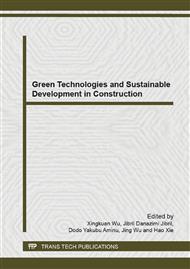p.27
p.34
p.38
p.44
p.48
p.52
p.57
p.61
p.66
Energy Performance of SOFC Cogeneration System for Residential Buildings in Chinese Cold Areas
Abstract:
Primary energy reduction and energy efficiency improvement are important targets to be achieved in every society and in residential buildings in particular. An energy-efficient and low-emissions solid oxide fuel cell (SOFC) cogeneration system is a promising electric and thermal energy generation technology for implementation in future residential buildings. This paper aims to analyze the energy performance in terms of primary energy demand and its reduction rate when SOFC cogeneration system is used in residential buildings. This study outlines SOFC cogeneration system and its simulation method, and then develops a standard family model for simulation under cold weather condition in China and selected Beijing city as an example, and finally compares them with traditional power and heat generation system based on gas and electricity. The results show that SOFC cogeneration system is an energy-efficient alternative power and thermal energy cogeneration technology for cold climatic cities such as Beijing, and can offer a large reduction rate (about 15.8% in winter) of primary energy demand in residential buildings. This study also finds that the significant reductions in primary energy demand of SOFC system result for the periods with air temperature decreasing.
Info:
Periodical:
Pages:
48-51
Citation:
Online since:
May 2014
Authors:
Price:
Сopyright:
© 2014 Trans Tech Publications Ltd. All Rights Reserved
Share:
Citation:


